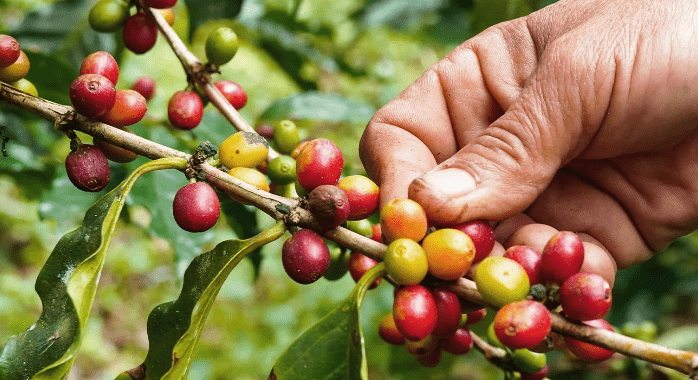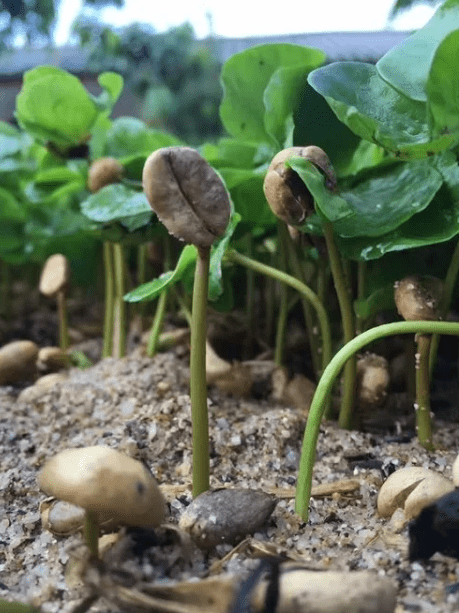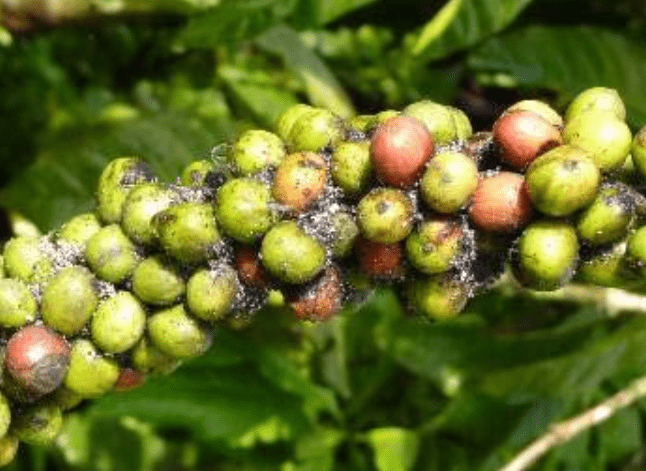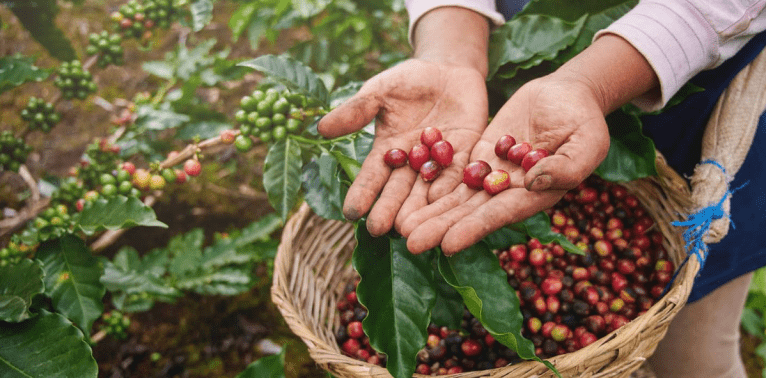
Coffee Plant Seeds: Tips for Successful Planting and Care
Growing your own coffee from scratch can be an incredibly rewarding experience for any coffee enthusiast. Starting with coffee plant seeds, you can cultivate your very own coffee plants, enjoying the entire process from seed to cup. In this comprehensive guide, we will walk you through everything you need to know about growing coffee plants from seeds, ensuring a successful and fulfilling gardening adventure.
Table of Contents
ToggleUnderstanding Coffee Plant Seeds
1.What are Coffee Plant Seeds?
Coffee plant seeds, also known as coffee beans, are the seeds of the coffee plant (Coffea). They are the starting point for growing coffee plants and eventually harvesting coffee beans for brewing. Coffee plant seeds are typically small, oval-shaped, and have a hard outer shell.
A.Description and botanical background
Coffee plant seeds, also known as coffee beans, are the seeds of the Coffea plant. These seeds are the starting point for growing your own coffee plants and eventually harvesting coffee beans for brewing. The seeds are typically small, oval-shaped, and have a hard outer shell. The Coffea plant is a tropical evergreen shrub or small tree that belongs to the Rubiaceae family. It is native to subtropical Africa and islands in the Indian Ocean. The plant produces small, white, fragrant flowers and red, fleshy fruits known as coffee cherries, which contain the coffee seeds. It’s important to understand the botanical background of the coffee plant and its seeds in order to successfully plant and care for them.
B.Differences between Arabica and Robusta seeds
There are two main types of coffee plants and seeds: Arabica and Robusta. Arabica seeds are known for their mild flavor and aromatic qualities, making them the preferred choice for specialty coffee. They are also more delicate and susceptible to disease, requiring specific growing conditions such as higher altitude and cooler temperatures. On the other hand, Robusta seeds are known for their strong, bitter flavor and higher caffeine content. They are more resilient and easier to cultivate, thriving in lower altitudes and warmer climates. Understanding the differences between these seeds is important when deciding which type of coffee plant to grow and how to care for them.
2.Benefits of Growing Coffee from Seeds

Growing coffee from seeds can be a rewarding and enjoyable experience. Not only will you have the satisfaction of growing your own coffee beans, but you’ll also be able to enjoy the process from start to finish. Watching the small, white, fragrant flowers bloom and the red, fleshy coffee cherries develop can be a truly rewarding experience. Additionally, growing coffee from seeds allows you to have a direct impact on the quality and flavor of your coffee beans. You can control the growing conditions and ensure that your coffee plants receive the care and attention they need to produce high-quality beans. Overall, growing coffee from seeds can be a great way to connect with nature and enjoy a delicious cup of coffee that you’ve personally nurtured and harvested.
Selecting and Obtaining Coffee Plant Seeds
1.Choosing Quality Seeds

Choosing Quality Seeds is an important step in successfully growing coffee plants. Look for seeds that are fresh, plump, and free from any signs of damage or decay. It’s also best to choose seeds that are from reputable sources, as this can ensure that you are starting with the best possible genetic material. When obtaining coffee plant seeds, consider purchasing from a nursery or specialty store that specializes in coffee plants. This can ensure that you are getting seeds that are specifically suited to your climate and growing conditions. Additionally, consider reaching out to local coffee farmers or enthusiasts who may be able to provide you with high-quality seeds or seedlings. By choosing the best seeds for your coffee plants, you can set yourself up for success and ensure that you’ll be able to enjoy the fruits of your labor when it comes time to harvest your homegrown coffee beans.
2.Types of Coffee Seeds
When it comes to growing coffee plants from seeds, there are a few different options to consider. The two main types of coffee seeds are Arabica and Robusta. Arabica seeds are known for their high-quality, flavorful beans, making them a popular choice for home growers. Robusta seeds, on the other hand, are known for their strong, bitter flavor and higher caffeine content, making them a good option for those who prefer a more robust cup of coffee. When choosing the type of seeds to plant, consider the flavor profile and caffeine content that you prefer in your coffee. Additionally, it’s important to consider the growing conditions in your area and choose seeds that are well-suited to your climate and environment. By selecting the right type of coffee seeds, you can ensure that you’ll be able to grow healthy, productive coffee plants that will provide you with a bountiful harvest of homegrown coffee beans.
Preparing Coffee Plant Seeds for Planting
1.Seed Preparation Techniques
Seed Preparation Techniques are essential for ensuring successful growth of your coffee plants. One common method is to soak the seeds in water for 24 hours before planting. This helps to soften the outer shell of the seed and promote germination. Another technique is to scarify the seeds by gently nicking or scratching the outer shell to help it absorb water and nutrients more easily. Regardless of the method you choose, be sure to choose healthy, high-quality seeds and handle them with care during the preparation process to give your coffee plants the best chance of success. By properly preparing your coffee plant seeds, you can set the stage for healthy and thriving coffee plants that will eventually yield delicious homegrown coffee beans for you to enjoy.
2.Soil and Pot Preparation

Soil and Pot Preparation are crucial for the successful growth of coffee plant seeds. Choose a well-draining potting mix that is rich in organic matter and has a slightly acidic pH level. This will create the optimal environment for your coffee plants to thrive. When selecting a pot, be sure to choose one with adequate drainage holes to prevent waterlogging, which can lead to root rot. Additionally, consider the size of the pot, as coffee plants can grow quite large, so it’s important to provide them with enough space to spread their roots and grow comfortably. Once you have prepared the soil and pot, you can plant your coffee plant seeds and give them the care and attention they need to grow into healthy, productive coffee plants. With the right preparation and care, you can look forward to enjoying your own homegrown coffee beans in the future.
Planting Coffee Plant Seeds
1.Planting Process
When planting coffee plant seeds, it’s important to start with fresh, viable seeds. To do this, soak the seeds in water for 24 hours to help remove the outer layer and promote germination. After soaking, plant the seeds in the prepared potting mix, making sure to cover them with a light layer of soil. Keep the soil consistently moist but not waterlogged, as excess water can cause the seeds to rot. Place the pot in a warm, sunny location and be patient, as coffee plant seeds can take several weeks to germinate. Once the seeds sprout, continue to provide them with plenty of sunlight and water, and watch as they grow into healthy coffee plants. Remember that coffee plants can take several years to produce fruit, but the reward of enjoying your own homegrown coffee beans is well worth the wait. With proper planting and care, you can successfully grow your own coffee plants and enjoy the fruits of your labor.
2.Germination Conditions
The key to successfully planting and caring for coffee plant seeds is to ensure the right germination conditions. Start by obtaining fresh, viable seeds and soaking them in water for 24 hours to promote germination. After soaking, plant the seeds in a potting mix and cover them lightly with soil. It’s important to keep the soil consistently moist, but not waterlogged, as excess water can cause the seeds to rot. Place the pot in a warm, sunny location and be patient, as coffee plant seeds can take several weeks to germinate. Once the seeds sprout, continue to provide them with plenty of sunlight and water. It’s important to remember that coffee plants can take several years to produce fruit, but the reward of enjoying your own homegrown coffee beans is well worth the wait. With proper planting and care, you can successfully grow your own coffee plants and enjoy the fruits of your labor.
Caring for Coffee Seedlings
1.Watering and Humidity
Watering and Humidity are crucial factors in successfully growing coffee plant seeds. After soaking the seeds in water for 24 hours to promote germination, it is important to plant them in a well-draining potting mix and keep the soil consistently moist, but not waterlogged. This will help the seeds to germinate and grow into healthy seedlings. Once the seedlings have sprouted, it is essential to continue providing them with adequate water and maintain a warm, humid environment. Coffee plants thrive in high humidity, so it is important to mist the seedlings regularly and place them in a warm, sunny location. With proper care and attention to watering and humidity, you can successfully grow your own coffee plants and eventually enjoy your own homegrown coffee beans.
2.Light and Temperature
In terms of temperature, coffee plants prefer warm, humid conditions. It is best to keep them in a location where the temperature is consistently between 60-70 degrees Fahrenheit. Avoid placing them in drafty or cold areas, as this can stunt their growth and development.
By providing your coffee plant seeds with the right amount of light and maintaining a suitable temperature, you can ensure that they grow into healthy, strong plants that will eventually produce coffee beans for you to enjoy. It is important to be mindful of these factors and provide your plants with the care and attention they need to thrive. With patience and dedication, you can successfully grow your own coffee plants and ultimately enjoy the satisfaction of brewing coffee from beans that you have grown yourself.
3.Fertilizing
Fertilizing your coffee plants is essential to ensure that they receive the nutrients they need to grow and produce healthy coffee beans. It is important to use a balanced, water-soluble fertilizer specifically designed for houseplants. During the growing season, which is typically spring and summer, you should fertilize your coffee plants every 2-4 weeks. Be sure to follow the instructions on the fertilizer package to avoid over-fertilizing, which can damage the plants. With proper fertilization, you can support the healthy growth of your coffee plants and increase the likelihood of a successful harvest of coffee beans. Remember to water the plants regularly to ensure that the fertilizer is absorbed properly and to maintain the moisture levels in the soil. With the right care and attention, you can successfully grow and care for your own coffee plants and eventually enjoy the satisfaction of brewing coffee from beans that you have nurtured and cultivated yourself.
Transplanting Coffee Seedlings
1.When to Transplant
When your coffee plant seedlings have outgrown their current containers and their roots start to become crowded, it’s time to transplant them into larger pots. This is usually between 6-12 months after germination. Transplanting your coffee seedlings into larger pots will allow them to continue growing and developing without being restricted by the small container. It’s important to do this carefully to avoid damaging the delicate roots of the seedlings. Choose a pot that is 1-2 inches larger in diameter than the current one, and make sure it has good drainage holes at the bottom. Gently remove the seedling from its current pot, being careful not to disturb the roots too much, and place it in the new pot. Fill the remaining space with fresh potting soil and water the plant thoroughly. Keep the newly transplanted seedlings in a warm, bright location and continue to care for them as they grow into healthy coffee plants.
2.Transplanting Process
Transplanting coffee seedlings is an important step in ensuring the healthy growth of your coffee plants. It’s important to transplant them when they have outgrown their current containers, usually between 6-12 months after germination. Choose a pot that is slightly larger than the current one and has good drainage holes. Carefully remove the seedling from its current pot, being mindful of the delicate roots, and place it in the new pot with fresh potting soil. Water the plant thoroughly and keep it in a warm, bright location. This will allow the seedlings to continue growing and developing without being restricted by the small container, ultimately leading to the successful growth of healthy coffee plants.
Maintaining Mature Coffee Plants
1.Pruning and Shaping
Pruning and Shaping are important practices for maintaining mature coffee plants. Regular pruning helps to promote healthy growth, improve air circulation, and prevent the plant from becoming too dense. It’s best to prune your coffee plant in the early spring before the growing season begins. Use sharp, clean pruning shears to remove any dead or diseased branches, as well as any branches that are crossing or rubbing against each other. This will help to open up the plant and encourage new growth. Shaping your coffee plant can also help to maintain a desirable size and form. You can train your coffee plant to grow in a certain shape by selectively pruning and guiding the growth of the branches. This can be done by carefully removing unwanted branches and encouraging the plant to grow in a specific direction. Overall, proper pruning and shaping practices are essential for keeping your coffee plants healthy and well-maintained, ultimately leading to a successful harvest of homegrown coffee beans.
2.Pest and Disease Management

Pest and Disease Management is an important aspect of caring for coffee plant seeds. The two main pests to look out for are coffee berry borers and coffee leaf rust. To prevent infestations, it’s important to regularly inspect your plants for any signs of pests or disease. If you notice any problems, it’s crucial to take immediate action to prevent the issue from spreading.
In terms of pest management, you can use organic pesticides to help control pests and keep them from damaging your plants. Additionally, practicing good cultural care, such as proper watering and fertilization, can help to keep your plants healthy and more resistant to pests and diseases.
Furthermore, ensuring that your coffee plants are in the right growing conditions, such as providing proper sunlight and temperature, can also help to prevent pest infestations and disease. Overall, being proactive in pest and disease management is essential for successfully growing and caring for coffee plant seeds.
2.Watering and Feeding Mature Plants
Proper watering and feeding of mature coffee plants is essential for ensuring healthy growth and a successful harvest of coffee beans. Coffee plants need to be watered regularly, but it’s important not to overwater them as this can lead to root rot. Make sure the soil is well-drained and water the plants when the top inch of soil feels dry to the touch. In terms of feeding, mature coffee plants benefit from regular fertilization. Use a balanced fertilizer specifically formulated for coffee plants and follow the instructions on the label for application. This will provide the plants with the necessary nutrients to support healthy growth and bean production. Additionally, it’s important to monitor the plants for any signs of nutrient deficiencies and adjust the feeding regimen as needed. With proper watering and feeding, you can ensure that your coffee plants thrive and produce high-quality beans for your enjoyment.
Harvesting and Processing Coffee Beans
1.Harvesting Coffee Cherries

Harvesting Coffee Cherries is an important step in the process of growing and producing your own coffee beans. When the coffee cherries are fully ripe, they should be hand-picked from the plant. It’s important to only pick the ripe cherries, as unripe ones will not produce the best quality beans. Once you have picked the cherries, they need to be processed to remove the pulp and extract the beans inside. There are two main methods for processing coffee beans: the dry method and the wet method. The dry method involves laying the cherries out in the sun to dry, while the wet method involves removing the pulp from the cherries using water. Whichever method you choose, it’s important to ensure that the beans are dried properly to prevent mold or rot. Once the beans are fully dried, they can be roasted and ground to make your own delicious coffee at home.
2.Processing Coffee Beans
When it comes to processing coffee beans, there are a few different methods that you can choose from. The first step is to remove the cherries from the coffee plant and extract the beans inside. This can be done using either the dry method, which involves laying the cherries out in the sun to dry, or the wet method, which uses water to remove the pulp from the cherries. Whichever method you choose, it’s important to ensure that the beans are dried properly to prevent mold or rot. Once the beans are fully dried, they can be roasted and ground to make your own delicious coffee at home. By carefully following these steps, you can successfully harvest and process your own coffee beans for a fresh and flavorful cup of coffee.
Safety Considerations
1.Handling Coffee Seeds and Plant
When handling coffee seeds and plants, it’s important to ensure that the beans are dried properly to prevent mold or rot. Once the beans are fully dried, they can be roasted and ground to make your own delicious coffee at home. When it comes to processing coffee beans, there are a few different methods that you can choose from. The first step is to remove the cherries from the coffee plant and extract the beans inside. This can be done using either the dry method, which involves laying the cherries out in the sun to dry, or the wet method, which uses water to remove the pulp from the cherries. By carefully following these steps, you can successfully harvest and process your own coffee beans for a fresh and flavorful cup of coffee.
2.Environmental Impact
Planting and caring for coffee plant seeds can have a positive environmental impact. Coffee plants thrive in tropical climates, so by growing your own coffee at home, you are reducing the need for long-distance transportation of coffee beans, which can contribute to carbon emissions. Additionally, growing your own coffee at home can also reduce the demand for coffee produced through unsustainable farming methods, helping to protect the environment and natural habitats. By taking the time to plant and care for coffee plant seeds, you are not only enjoying the benefits of homegrown coffee, but also making a positive impact on the environment.
In conclusion, growing your own coffee plants can be a rewarding and enjoyable experience. By following the tips and advice provided in this post, you can ensure that your coffee plants thrive and produce high-quality beans for you to enjoy. From proper planting techniques to ongoing care and maintenance, you can successfully cultivate your own coffee plants with the right knowledge and attention to detail. Happy planting and happy brewing!
Frequently Asked Question
Coffee plant seeds should be planted about 1 inch deep in a well-draining soil mix.
Keep the soil evenly moist, but not waterlogged. Water when the top inch of soil feels dry
Coffee plants thrive in temperatures between 65-80°F and prefer bright, indirect light.
Coffee plant seeds can take anywhere from 3-6 months to germinate, so patience is key
Start with a small pot and repot as the plant grows. A 6-8 inch pot should be sufficient for a young coffee plant.
Use a balanced, water-soluble fertilizer every 4-6 weeks during the growing season.
Yes, coffee plants can be grown indoors as long as they receive enough light and are kept in a warm environment.
It can take 3-4 years for a coffee plant to start producing beans, so it requires long-term commitment and care.
